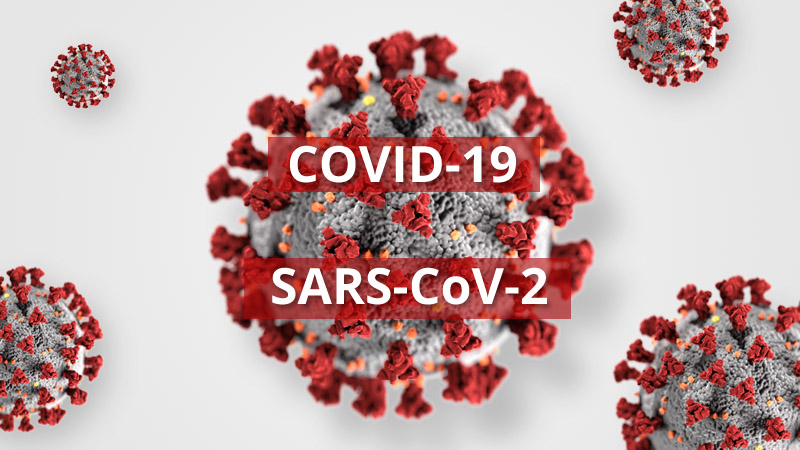
Fever, cough, and loss of smell and taste are the most common of the symptoms of COVID-19. However, not everyone knows that in the course of SARS-CoV-2 virus infection there is another important symptom, which is back pain. What are the characteristics of back pain with COVID-19? When should it be consulted with a doctor? How long do the complaints last? How to fight them? We answer these and other questions in the following article!
Back pain may not necessarily suggest coronavirus infection, but it is worth remembering that one of the symptoms of COVID-19 disease is muscle and joint pain. The back is a number of muscle groups, so it is not worth underestimating the symptoms, especially if they are accompanied by other symptoms characteristic of SARS-CoV-2 infection.
Can back and muscle pain be a symptom of COVID-19?
Muscle pain, but also joint pain, is one of the symptoms of many diseases. Back pain may also be one of the unusual symptoms of COVID-19.
Back pain associated with COVID-19 appears to occur later in the course of the disease. It is unlikely to be an early symptom. In the list of major symptoms suggestive of coronavirus infection, back pain is listed most often along with muscle pain. Experts point out that coronavirus, like influenza or other pathogens, causes pain, arising as an immune system response to an ongoing inflammatory process.
COVID-19 sufferers sometimes spend a lot of time convalescing in bed, which can also lead to back pain due to relaxed muscles and altered spinal biomechanics.
Read: Atypical symptoms of COVID-19 – what to look out for? Latest observations
How does the back hurt with COVID-19?
Back pain in people infected with COVID-19 nevertheless occurs quite frequently. Patients complain of discomfort involving the lower back and also in the shoulder blade area. They describe it as deep, intense, excruciating and hard to bear. Many people describe that the back pain is so severe that they „feel like someone is pulling out their muscles.”
Sometimes back pain causes patients to have difficulty sleeping, but it also makes it difficult for the patient to perform activities such as standing, climbing stairs, grasping objects with their hands or raising their arms above their head, due to the severe and very intense pain.
Another cause is not directly related to the virus. People with COVID-19 are less active than usual. This can cause muscle pain, stiffness and weakness.
How long does the back hurt with COVID-19?
Back pain associated with COVID-19 alone is often different from pain associated with overexertion, which usually lasts several days. Pain due to COVID-19 can last for days or weeks, with no relief from changing body position.
Why does the back hurt in the course of COVID-19?
Muscle pain (including muscles found in the back) is the immune system’s response to the ongoing inflammatory process caused by infection with the SARS-CoV-2 coronavirus. Back pain can also be associated with a reduction in the patient’s activity and lying down for several days. Back pain with COVID-19 is then accompanied by a feeling of stiffness and weakness and muscle aches. Thoracic back pain, on the other hand, can result from increased coughing, which engages many muscle groups.
Most often, back pain occurs early in the course of the disease, so it can be helpful in diagnosing it quickly. In the case of the Delta variant, on the other hand, the symptom is usually observed about 4-5 days after infection. Interestingly, a regularity has been noted – severe back pain is usually reported by fully vaccinated patients.
COVID-19 – when does back pain require medical consultation?
In most cases, back pain with COVID-19 is not dangerous – body pain is a natural reaction of the immune system to fight inflammation caused by the virus. Usually, back pain with coronavirus is not a threatening symptom. However, it is important to know that in some cases it is necessary to contact a doctor.
A visit to a specialist is advisable when the patient develops severe back pain at the level of the lungs or chest pain, and on top of that the patient has pronounced breathing problems and shortness of breath. These symptoms may indicate pneumonia. The patient’s vigilance should also be drawn to falling saturation, which may indicate respiratory failure or its beginnings.
Treatment of back pain with COVID-19
Treatment for coronavirus consists primarily of implementing conservative treatment. The patient should rest and take painkillers and antipyretics. For back pain, painkillers available in tablets or in the form of an ointment applied topically to the site of pain can help.
Back pain associated with COVID-19 goes away on its own, but you can help yourself with gentle exercises.
Once the infection has passed, aim to return to your usual activities, gradually increasing the amount of movement and activity.
